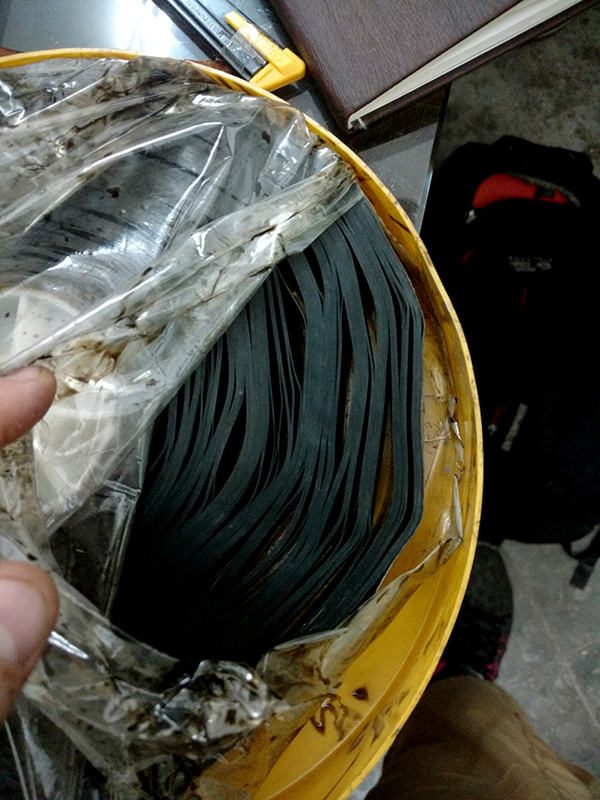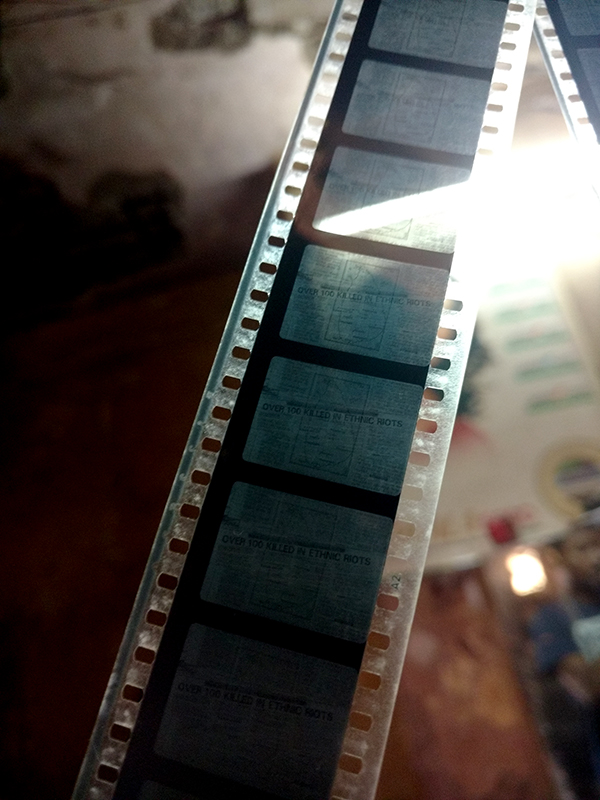David Farris
Grant Period: One year and six months
This Grant was amicably cancelled based on reasons mutually agreed upon by the Grantee and IFA due to unavoidable circumstances.
David Farris has a PhD in Mathematics from the University of California, Berkeley. He has worked with Indian Institute of Science, UC Berkeley and Harvard University among others. He was the mathematician-in-residence at the National Centre for Biological Sciences, Tata Institute of Fundamental Research. None of this, however, connects him to the work he has proposed to undertake with the support of India Foundation for the Arts, which is to study the collapse of the celluloid film distribution infrastructure in India at the wake of digital distribution. David studied undergraduate courses in Film Studies and Art History at Harvard College and underwent training at the George Eastman Museum. He has been living in India since 2011 and in 2016 he founded the Shabistan Film Archive in Bengaluru, a non-profit trust and coalition of professional archivists and scholars to carry out preservation work on Indian Film. According to David, it maintains the world’s third largest collection of Indian films on celluloid. He has given seminars at the George Eastman Museum and North western University on the subject. As support towards his work with films he has provided two reference letters from Lawrence Cohen, Sarah Kaliath Professor of India Studies at UC Berkeley and Paolo Cherchi Usai, Senior Curator, Moving Image Department of the George Eastman Museum.
In the world of Indian commercial cinema, once a film was made the production company would sell it to a distributor who made multiple celluloid copies of it and send them to various film screening halls. The profits would be shared among the hall owners, the distributors and the production company. A paradigm shift has occurred in this system over the last decade, although it has gone quite unnoticed by archivists and scholars alike. Film projection is rapidly being replaced by digital projection. Distributors are not buying or making physical copies on celluloid anymore. The production company saves a digital copy of the film on a digital server of a distribution agency and the halls subscribe to the films they wish to show. This is not a case of mere upgrading of technology; it has a devastating effect on the future of film preservation.
In India, many single screen theatres in the urban and rural sectors used to project films as long as celluloid was a viable option. Distributors would store the film cans, re-releasing them every now and then to second run theatres. Film halls would earn some extra profit and reputation by re-running the popular films of yesteryears. This was a fairly common practice all over India. The audience was almost completely working class in these theatres. In the last decade this practice has seen a major decline as all halls must now equip themselves for digital projection. Two companies viz. UFO Digital and Real Image (QUBE) provide the infrastructure including the servers that the distribution agencies use for digital projection in India, which is controlled remotely from wherever the company has their servers. The halls have no control over projection except switching on the projector at the designated time. The working class patronage has also dwindled because they have cheaper options available via television and pirated digital materials through web based services.
At the wake of this digital infrastructure, many such halls either closed down because they lacked the economic resource to upgrade or shifted to digital infrastructure completely abandoning the screening of older films. The distributors who used to preserve the celluloid films for later runs are beginning to abandon them in favour of their digital counterparts. Digital distribution has significantly reduced cost of the whole infrastructure increasing the profit margin. Distributors see no commercial reason to save celluloid copies which demands economic resource, space and manpower. They are ready to discard them completely. Many are already selling them to junk dealers for little money or discard them in the nearest landfill.
David is trying to save as many of these films as possible by acquiring them from the distributors before they destroy or sell them off. This effort also gives him unique access to the whole infrastructure as it is going through this massive transformation in various parts of the country. The transition has not taken place equally in a country so vast with various industries, economic models and audiences. Regional industries understandably are still catching up with the digital phenomenon. David proposes to study this extinction of the celluloid infrastructure and the digital transition in Indian cinema. To understand the transition in its entirety he would need to develop an understanding of the structure and economics of distribution and exhibition, as well as inquire into film labs and film projection technology. Since the film business is almost completely controlled by the distributors in India, it also has significant impact on the aesthetics of the film. The production companies dictate the aesthetics of the film depending on the infrastructure of the halls they wish to release. To conduct his study David would visit various centres all over the country, interview people associated with the business and take help of whatever written material is available at archives and the distributors’ offices.
There is a critical urgency to study this subject as the collapse is imminent and India might not have any commercial celluloid projection facility left within a foreseeable future. Even within the relatively small repertoire of film research in India, such infrastructure and industrial research hardly ever finds any place, although everyone agrees that it is the need of the moment. Film archiving in India has always been abysmal, and there is almost no study conducted in this area in the Indian context. Established film archives in India have almost no surviving material from before 1932, and very little survives from the following decades, often in irrecoverable conditions. David claims only 5% of films produced post 1950s are preserved in celluloid and there has been large scale destruction of celluloid material since 2014. Study of celluloid and the infrastructure related to its distribution and exhibition will become increasingly difficult in the near future.
David wishes to publish a detailed essay on the topic, preferably in an academic journal as the outcome of the research project. He also wishes to publish a detailed set of notes on the status of film distribution system as it stands now. This might not stand on its own as an article but can serve as a useful set of data in the appendix of a book or a website on the subject. He will submit audio-visual recordings and/or transcripts of interviews, photographs of the sites, manuscript of the essay and the notes as deliverables. Given the range and uniqueness of his idea and scope of the project his budget is adequate.
This grant is made possible with support from Titan Company Limited.




